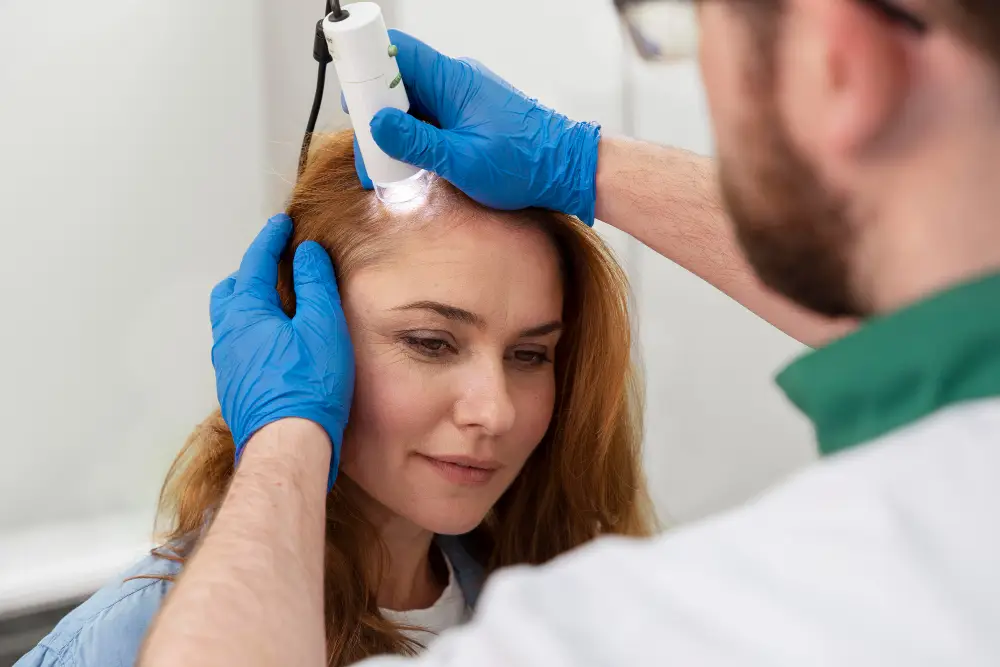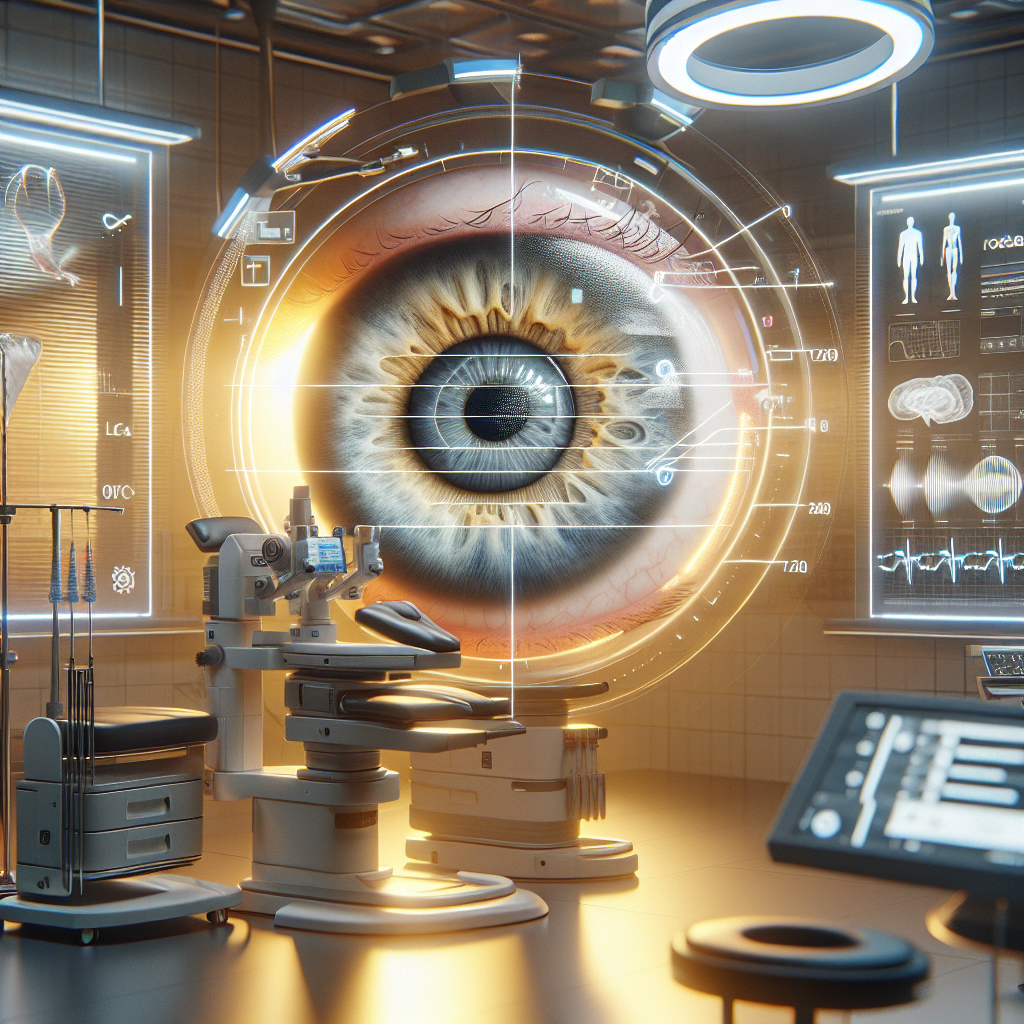
Stem Cell Treatment for Degenerative Eye Disease: Your Guide to Advanced Pathways
Key Takeaways
- Degenerative eye diseases pose significant challenges, with many conventional treatments focusing on slowing progression rather than true restoration.
- Stem cell applications for conditions like retinal degeneration and macular repair are an active area of research, offering potential new pathways for vision preservation and even enhancement.
- Colombia, particularly cities like Pereira, provides a unique environment for seeking advanced medical care, combining high-standard facilities with a supportive patient journey.
- Ethical considerations and rigorous regulatory oversight, such as that provided by INVIMA in Colombia, are paramount when exploring novel therapies like stem cell treatments.
- Navigating international medical options requires clear guidance; our “Ocular Health Pathway Planner” is designed to demystify the process and empower informed decisions.
Introduction: Seeking Clarity for Degenerative Eye Disease
Living with a degenerative eye disease can be a profoundly challenging journey. The gradual erosion of vision, the uncertainty of what lies ahead, and the often-limited conventional options can leave individuals feeling isolated and without a clear path forward. If you are exploring possibilities beyond traditional care, particularly concerning stem cell treatment of degenerative eye disease, you’ve arrived at a crucial juncture. This guide is designed not only to inform but to empower you with a comprehensive understanding of evolving pathways, focusing on ethical considerations, scientific insights, and the unique advantages offered by the team at Regencord in Pereira, Colombia.
Our objective is to illuminate the landscape of potential treatments, specifically addressing retinal regeneration and macular repair, and to discuss how these might contribute to vision restoration efforts. We understand the anxieties that accompany such a personal and vital decision. Through this resource, we aim to provide the clarity and confidence necessary for informed action, ensuring you understand every facet of the patient journey when considering international medical care.
The Stakes: Understanding Degenerative Eye Disease and Vision Loss

Degenerative eye diseases, a broad category encompassing conditions like age-related macular degeneration (AMD), retinitis pigmentosa, and glaucoma, represent a leading cause of vision impairment and blindness globally. The World Health Organization (WHO) highlights that hundreds of millions of people worldwide live with some form of vision impairment, many of which are preventable or treatable, but a significant portion stem from these progressive conditions that currently have no comprehensive options for reversal.
The Silent Progression of Vision Loss
For many, the onset of these conditions is insidious. Symptoms may begin subtly – a blur in central vision, difficulty adapting to low light, or reduced peripheral awareness – making early detection a challenge. As the disease progresses, daily activities become increasingly difficult, impacting independence, quality of life, and emotional well-being.
Research published in PubMed-indexed journals consistently underscores the complex pathology of these conditions, often involving the deterioration of photoreceptor cells and retinal tissue. The challenge lies in addressing this cellular loss and damage, which traditional therapies often struggle to fully achieve. This drives the continuous search for innovative approaches, including those focusing on potential retinal regeneration and macular repair.
The Promise of Regenerative Pathways
Against this backdrop, the concept of stem cell treatment of degenerative eye disease emerges as a compelling area of scientific investigation. Stem cells, with their unique ability to differentiate into various cell types and to self-renew, hold potential for addressing the root causes of vision loss by replacing damaged retinal cells, supporting existing cells, or modulating the ocular environment. ClinicalTrials.gov lists numerous ongoing studies exploring different stem cell types and delivery methods for various eye conditions, reflecting the global scientific community’s commitment to this area.
It’s important to frame these advancements within an ethical and evidence-based context. While the promise of vision restoration is profound, the journey from laboratory research to established clinical practice is meticulous and rigorous. Our focus is on understanding these pathways as they evolve and helping you discern credible opportunities from speculative claims, always prioritizing patient safety and well-being.
Conventional Approaches: What to Expect in Many Developed Nations
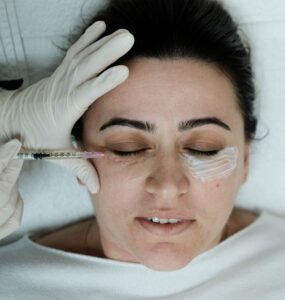
In many developed countries, the management of degenerative eye disease typically follows established clinical guidelines set forth by national health authorities such as the U.S. National Institutes of Health (NIH), the U.S. Food and Drug Administration (FDA), or the European Medicines Agency (EMA). These conventional strategies are vital and focus primarily on slowing disease progression, managing symptoms, and preserving remaining vision.
Current Treatments and Their Limitations
- Medications: For conditions like wet age-related macular degeneration, anti-VEGF injections are a common approach, aiming to inhibit the growth of abnormal blood vessels. While effective in many cases, they require ongoing treatment and do not reverse existing damage or restore lost vision in all patients.
- Laser Therapy: Used for certain retinal conditions, laser treatments can help seal leaky blood vessels or destroy abnormal tissue. However, they can also cause some collateral damage to healthy tissue and are not suitable for all forms of degeneration.
- Supplements: Specific vitamin and mineral formulations (e.g., AREDS formulas) are recommended for some forms of AMD to reduce the risk of progression to advanced stages, but they are not a treatment for existing vision loss.
- Low Vision Aids: Magnifiers, specialized lenses, and electronic devices are crucial tools that help individuals maximize their remaining vision, improving daily function and independence.
These conventional methods, while foundational, often leave patients searching for more. The frustration stems from the fact that they primarily manage symptoms or slow decline, rather than actively promoting retinal regeneration or macular repair. This gap in therapeutic options is precisely why the exploration of advanced, ethical regenerative pathways becomes so compelling for individuals facing progressive vision loss.
The Pereira, Colombia Advantage: A New Horizon for Ocular Care
When considering advanced medical pathways for conditions like degenerative eye disease, the location of care is as important as the care itself. Pereira, Colombia, offers a distinctive confluence of high-standard medical infrastructure, a patient-centric approach, and a recovery-conducive environment that sets it apart.
A Commitment to Quality and Safety
Colombia has rapidly emerged as a prominent destination for international medical care, driven by significant investments in its healthcare system. The nation’s regulatory body, INVIMA (Instituto Nacional de Vigilancia de Medicamentos y Alimentos), plays a rigorous oversight role, ensuring that medical facilities, treatments, and devices adhere to stringent national and often international safety and quality standards. This commitment to regulated, ethical care is a cornerstone of the medical services provided in Pereira.
The team at Regencord operates within this robust framework, focusing on the careful evaluation and application of regenerative science. We prioritize patient education, ensuring that individuals understand the pathways available and the ongoing scientific context from reputable sources like the NIH and PubMed-indexed research.
Beyond the Clinic: The Healing Environment
Our synthesized experience has shown us that beyond medical capabilities, the healing environment significantly impacts well-being. Pereira, nestled in Colombia’s picturesque Coffee Region, offers a unique blend of modern medical infrastructure and a tranquil, recovery-conducive atmosphere. Patients consistently report that the blend of high-standard care, warm cultural hospitality, and a serene natural setting contributes positively to their overall experience, fostering a sense of calm often absent in high-stress medical environments.
This holistic approach extends to the quality of life during your stay. The region boasts a comfortable climate, vibrant cultural experiences, and renowned hospitality, which can alleviate some of the common anxieties associated with international travel and medical treatment. This supportive ecosystem is integral to the patient journey we facilitate.
Integrated Patient Journey and Support
Patients seeking advanced ocular therapies often feel isolated and overwhelmed by fragmented information. Our experience shows that a truly supportive international patient journey begins not with a diagnosis, but with empathetic navigation—providing a single point of contact who understands both the medical complexities and the logistical hurdles, transforming uncertainty into a clear, manageable path.
From your initial inquiry to your post-treatment follow-up, the team at Regencord in Pereira, Colombia, is dedicated to streamlining every aspect of your experience. This includes assistance with travel logistics, accommodation, local transportation, and translation services, ensuring a seamless and comfortable journey. Our focus is on allowing you to concentrate solely on your health and recovery, with the confidence that every detail is managed with care and precision.
Introducing The Ocular Health Pathway Planner
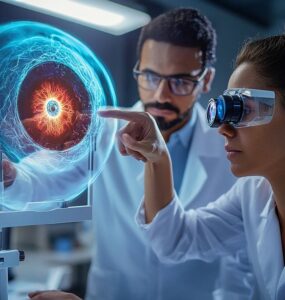
Understanding the potential for stem cell treatment of degenerative eye disease and navigating the options requires clear guidance. To demystify this complex process and empower you with actionable information, we have developed “The Ocular Health Pathway Planner.” This branded resource is designed as a practical checklist and guide to help you systematically evaluate your options and prepare for a potential international medical journey.
How The Ocular Health Pathway Planner Supports Your Journey:
- Initial Assessment & Information Gathering: This section guides you through the types of questions to ask your current medical provider, what medical records are essential, and how to begin researching stem cell treatment possibilities.
- Understanding Regenerative Pathways: We break down the current understanding of how stem cells are being explored for retinal regeneration and macular repair, drawing on insights from the NIH and clinical studies. This helps you grasp the scientific basis and potential applications.
- Ethical & Regulatory Considerations: The planner outlines key questions regarding the regulatory oversight of facilities (e.g., INVIMA in Colombia), ethical practices, and the importance of evidence-based approaches to ensure safety and transparency.
- Logistical Preparation for International Care: A detailed checklist covers everything from travel arrangements and visa requirements to accommodation, local support services, and communication strategies, transforming logistical anxieties into manageable tasks.
- Post-Care & Follow-up Planning: Emphasizing the continuity of care, this part helps you plan for your return home, including how to communicate with your local doctors and maintain a wellness routine.
The Ocular Health Pathway Planner is more than just a document; it’s a commitment to transparency and patient empowerment, ensuring you have a structured framework for making one of the most important decisions concerning your vision.
Our Regenerative Philosophy and Patient-Centered Approach
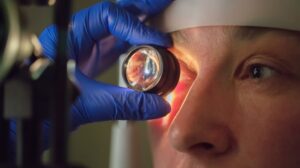
At Regencord in Pereira, Colombia, our approach to degenerative eye disease is rooted in a philosophy that combines scientific rigor with profound patient advocacy. We understand that exploring stem cell treatment involves not just medical science, but also deeply personal hopes and concerns. Our focus is not on promising unverified outcomes, but on providing access to potential regenerative pathways within an ethical and supportive framework.
Foundations of Our Approach:
- Evidence-Informed Pathways: We continuously monitor advancements in stem cell research for ocular conditions, drawing on peer-reviewed studies indexed in PubMed and information from ClinicalTrials.gov. Our commitment is to pathways that are grounded in scientific understanding and adhere to international best practices.
- Patient Empowerment Through Education: We believe that an informed patient is an empowered patient. Our team takes the time to explain the complexities of stem cell treatment, discussing both its potential and the realistic scope of current applications for conditions requiring retinal regeneration or macular repair. We frame every discussion around clear, verifiable information, avoiding speculative language.
- Comprehensive Care Environment: Our team in Pereira, Colombia, views your health journey holistically. This means that while medical interventions are primary, the entire experience—from the comfort of our facilities to the tranquility of the surrounding environment—is designed to support your overall well-being. We understand that the path to vision restoration is multifaceted.
- Ethical Standards and Oversight: Operating under Colombia’s robust healthcare regulations, including INVIMA oversight, ensures that our practices meet high safety and ethical standards. This provides a crucial layer of reassurance for patients considering advanced therapies.
We are not merely a facility; we are a dedicated team committed to guiding you through a complex decision-making process with empathy, clarity, and unwavering support. Our aim is to introduce you to pathways that may offer renewed hope for vision restoration, all while upholding the highest standards of integrity and patient care.
Overcoming Common Hesitations: Why Seeking Clarity is a Strategic Advantage

For many individuals considering stem cell treatment of degenerative eye disease, particularly internationally, a natural array of hesitations can arise. These are valid concerns, and addressing them head-on with clarity and verifiable information is a core part of our mission at Regencord in Pereira, Colombia.
1. “Is receiving medical care in Colombia safe or legitimate for complex treatments like stem cell therapy?”
This is a common and understandable question. Colombia has a robust and evolving healthcare infrastructure, with many facilities meeting international standards. Regulatory bodies like INVIMA ensure that medical practices and advanced therapies adhere to strict national guidelines for safety and quality. The training of medical professionals in Colombia often includes international education and continuous professional development. When you consider the team at Regencord, you are looking at an institution committed to these high standards. Our focus is on carefully evaluated regenerative pathways, ensuring ethical practice and patient safety are paramount, aligned with global scientific understanding as reflected by sources like the NIH.
2. “This sounds too complicated and overwhelming. I wouldn’t know where to start with international travel for medical care, especially with vision challenges.”
The prospect of medical travel can indeed feel daunting. Our experience shows that a truly supportive international patient journey begins not with a diagnosis, but with empathetic navigation. This is where our dedicated patient advocacy team becomes your invaluable partner. We transform the perception of a complex process into a manageable, supported pathway. From handling travel arrangements and local logistics to assisting with cultural integration and providing language support, our team ensures you have a single, trusted point of contact throughout your journey. Your energy can then be fully directed towards your well-being, knowing that the intricacies of your international experience are expertly managed.
3. “What about the cost? Is it truly affordable, or are there hidden fees I should be worried about?”
Financial concerns are always critical. While we cannot make specific pricing claims, we can address the concern about transparency. The economic structure in Colombia can offer a different value proposition compared to some developed nations, often providing high-quality care at a comparatively different cost. However, true value is not just about price, but about clarity. At Regencord, we are committed to transparent communication regarding all anticipated expenses from the outset. Our process ensures you receive comprehensive information about your specific pathway, helping you make a financially informed decision without the worry of unexpected charges. We believe trust is built on open and honest discussions about all aspects of your care, including the financial considerations.
4. “How can I be sure the care quality in Colombia is comparable to what I’d receive at home for something as critical as my vision?”
Quality of care is non-negotiable, particularly when it comes to vision. We understand this deeply. Our assurance lies in verifiable indicators: modern facilities equipped for advanced diagnostics and procedures, highly trained medical professionals who often possess international qualifications, and a commitment to adhering to international medical protocols. Colombia’s health system, overseen by entities like INVIMA, maintains standards that many institutions strive to meet. For the team at Regencord, continuous adherence to these benchmarks and a philosophy centered on patient safety, diligent evaluation, and ethical application of science are fundamental. We encourage you to focus on these objective measures and the comprehensive support provided, rather than generic geographical comparisons, to build confidence in the care you would receive.
Seeking clarity about these hesitations is a strategic advantage. It allows you to move from uncertainty to informed decision-making, grounded in facts and understanding rather than assumption. Our goal is to provide that clarity every step of the way.
Glossary of Key Terms
- Degenerative Eye Disease:
- A broad category of progressive conditions affecting the eye’s structures, such as the retina or optic nerve, leading to gradual vision impairment or blindness.
- Stem Cell Treatment:
- An emerging therapeutic approach that utilizes stem cells (undifferentiated cells with the ability to become various cell types) to potentially repair, replace, or protect damaged tissues and cells, including those in the eye.
- Retinal Regeneration:
- The process of repairing or replacing damaged cells and tissues in the retina, the light-sensitive layer at the back of the eye, with the aim of restoring or preserving visual function.
- Macular Repair:
- Targeted efforts to regenerate or restore the health of the macula, the central part of the retina responsible for sharp, detailed vision, often affected by conditions like macular degeneration.
- Vision Restoration:
- The goal of medical interventions to improve or bring back lost visual function, rather than merely slowing the progression of vision loss.
- INVIMA:
- Colombia’s National Food and Drug Surveillance Institute, the regulatory body responsible for overseeing the safety and quality of medical products, devices, and health services in the country.
- Patient Journey:
- The entire experience a patient has when seeking medical care, encompassing all interactions, steps, and logistical considerations from initial inquiry to post-treatment follow-up.
Frequently Asked Questions About Stem Cell Treatment and International Ocular Care
Navigating new medical pathways and international travel naturally brings forth many questions. Here are some of the most common inquiries we receive, addressed with clarity and transparency.
Is stem cell treatment of degenerative eye disease a proven pathway for everyone?
Stem cell applications for degenerative eye diseases, including efforts for retinal regeneration and macular repair, are a highly active area of scientific research and clinical investigation. While ongoing studies, some listed on ClinicalTrials.gov and documented in PubMed, show promising potential, it is important to understand that these are not universally established or approved treatments for all conditions. Eligibility varies greatly by individual case and the specific therapeutic pathway. We focus on evidence-informed approaches and provide thorough evaluations to determine if a patient may be a candidate for pathways available through the team at Regencord.
How do I know if I am a candidate for these advanced pathways?
Determining candidacy involves a comprehensive review of your specific medical history, diagnosis, previous treatments, and overall health status. This process typically begins with a confidential case review, where our team evaluates your medical records. We look for specific criteria that align with the regenerative pathways we facilitate, ensuring that any potential intervention is thoughtfully considered and appropriate for your situation. It’s a personalized assessment, not a generic one.
What are the potential considerations or implications of stem cell treatments for the eye?
As with any medical pathway, understanding the potential considerations is crucial. For stem cell treatments in ophthalmology, these can vary depending on the type of stem cells used, the method of administration, and the individual patient. General considerations might include the body’s response, the need for post-treatment monitoring, and the ongoing nature of research in this field. We ensure that all patients are fully informed about the specific implications, potential benefits, and any associated considerations for their particular pathway, drawing on publicly available scientific information from sources like NIH.
How long would I need to stay in Pereira, Colombia, for treatment?
The duration of your stay in Pereira can vary depending on the specific regenerative pathway recommended and your individual needs. This will be clearly outlined during your confidential case review and treatment planning phase. Our patient advocacy team will assist you in understanding the typical timelines, helping you plan your travel and accommodation accordingly to ensure a comfortable and unhurried experience.
What kind of support is available for international patients?
Our commitment to a seamless patient journey extends to comprehensive support for international patients. This includes assistance with pre-travel arrangements, airport transfers, local transportation, comfortable accommodation options, and dedicated patient advocates who can assist with language interpretation and cultural guidance. We aim to make your focus solely on your health and recovery, with all logistical details expertly managed by our team at Regencord in Pereira, Colombia.
Your Next Step: Discover if You are a Candidate
The journey to understanding and potentially addressing degenerative eye disease is a deeply personal one. If you are exploring advanced pathways for retinal regeneration, macular repair, or vision restoration, the most important step is to seek clear, reliable information tailored to your unique situation.
The team at Regencord in Pereira, Colombia, is ready to guide you through this process with transparency, empathy, and a commitment to ethical care. We invite you to learn more about the potential regenerative medicine pathways we facilitate.
Discover if you are a candidate for the regenerative medicine pathways available through the team at Regencord in Pereira, Colombia. Contact us for a confidential case review.
